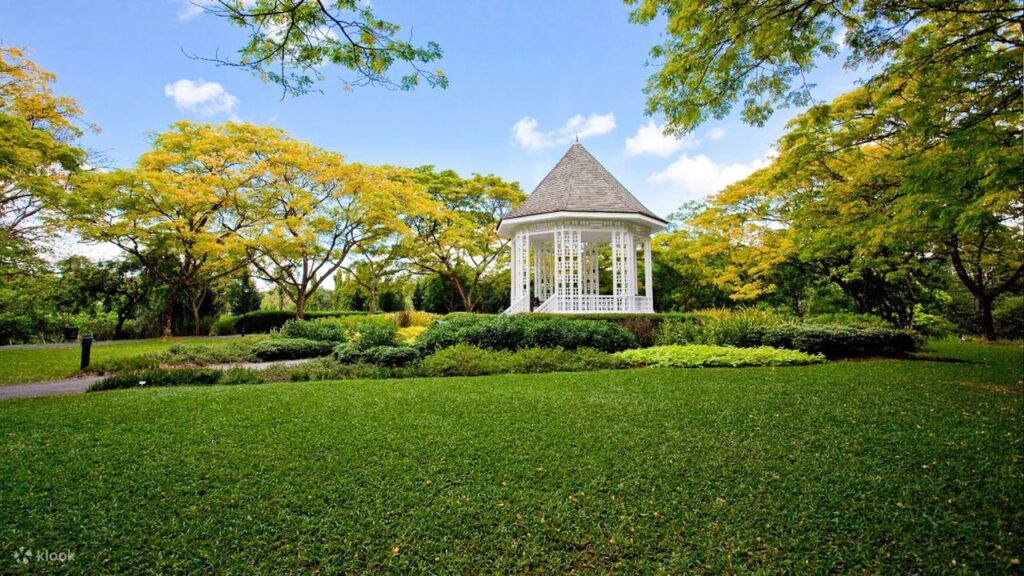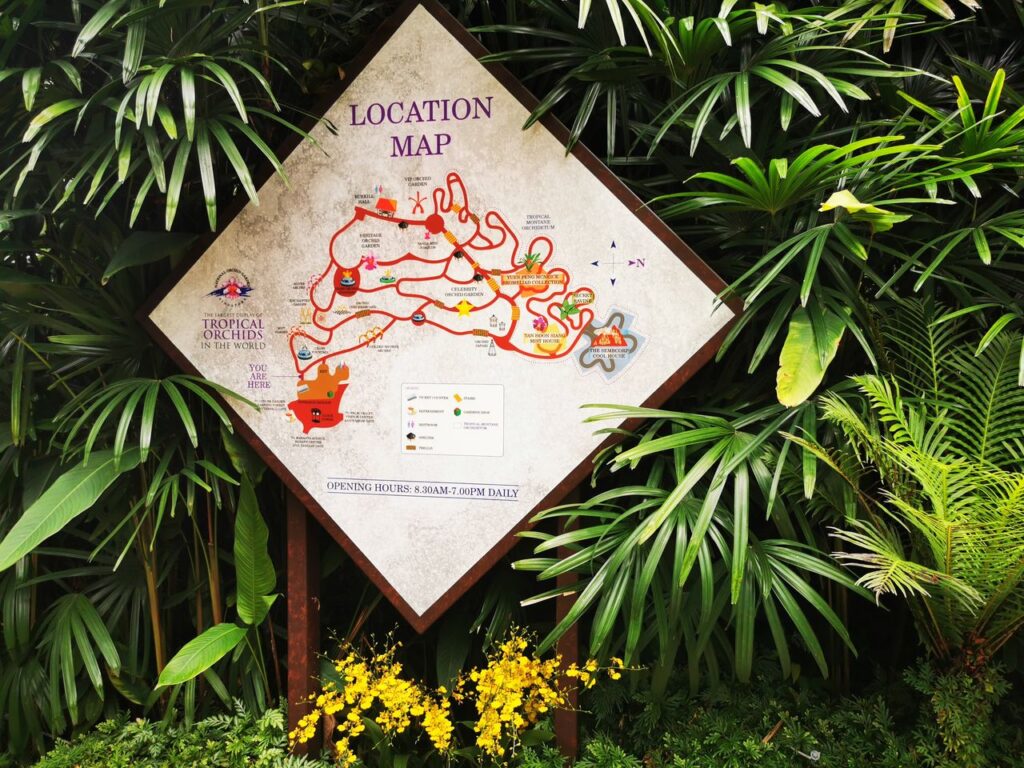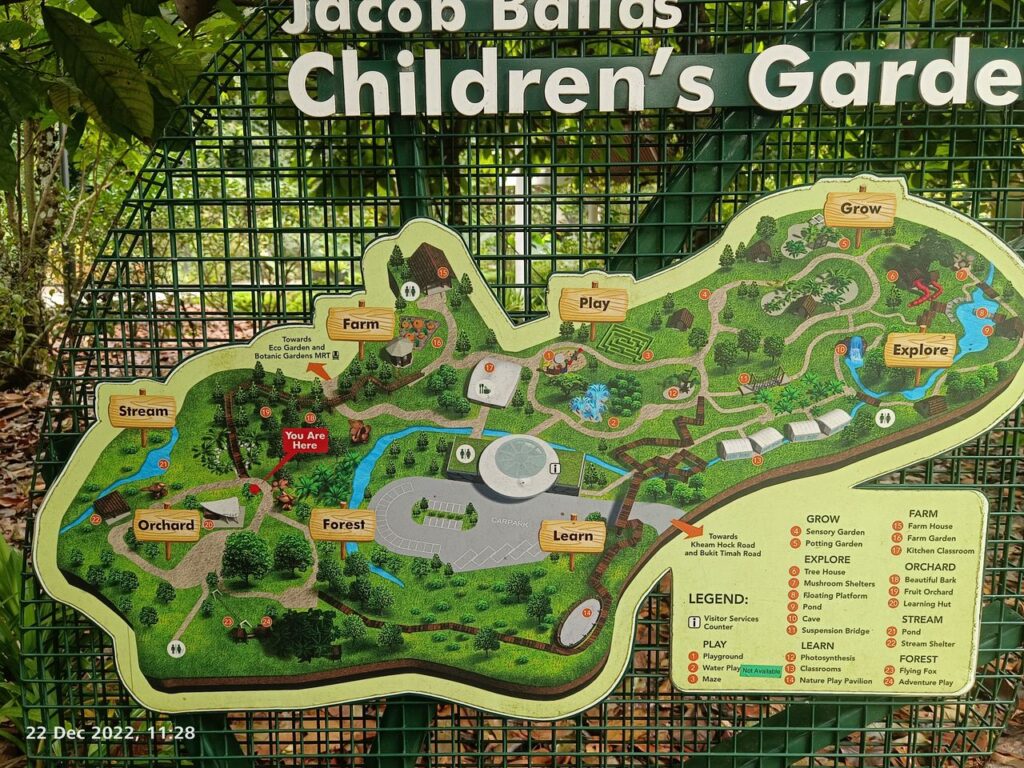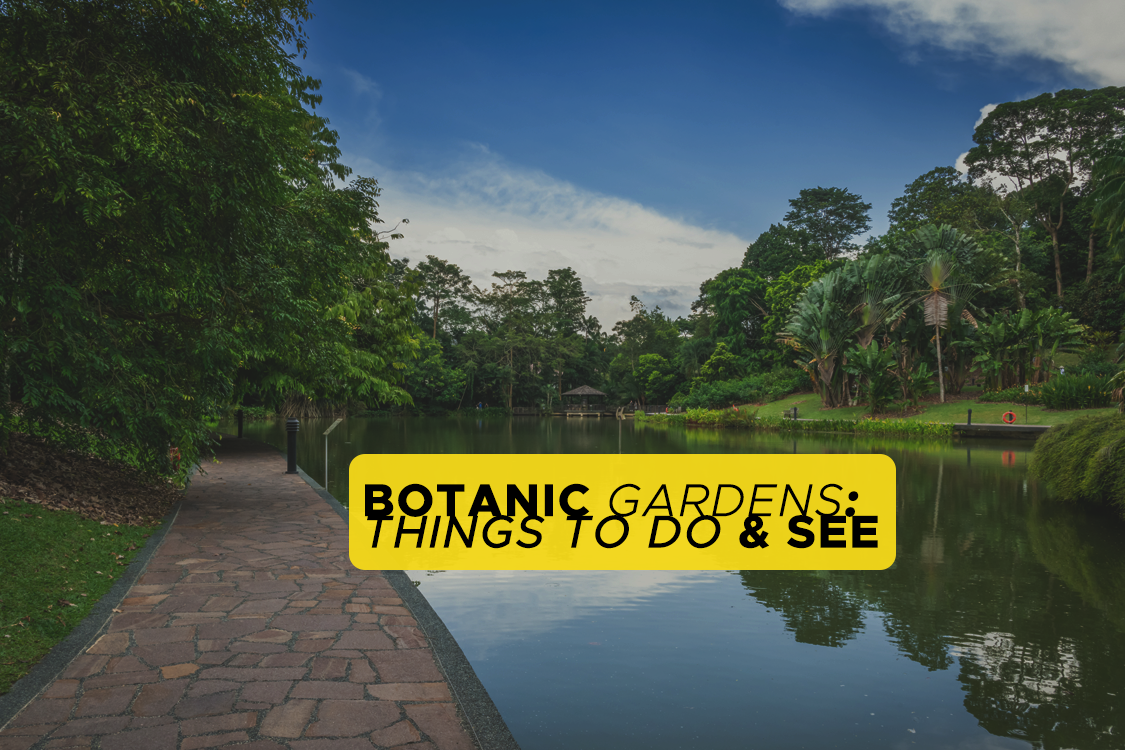Nestled in the heart of Singapore, the Singapore Botanic Gardens stands as a testament to the city-state’s moniker as a “City in a Garden.” This verdant oasis, spanning over 160 years of history, is not just a sanctuary for flora and fauna but also a UNESCO World Heritage Site, attracting millions of visitors annually. Its rich biodiversity, historical significance, and commitment to scientific research make it a must-visit destination for nature lovers, researchers, and tourists alike. Let’s delve into the myriad attractions, activities, and practical information to help you plan your visit to this botanical wonderland.
The Heart of Greenery in Singapore
Established in 1859, the Singapore Botanic Gardens has evolved from a disused plantation into a sprawling 82-hectare garden. Today, it serves as a critical centre for botanical and horticultural research, while providing a picturesque backdrop for recreational activities. Its location, just a stone’s throw away from the bustling Orchard Road, makes it an accessible retreat from the urban landscape.
Continuing our exploration of the Singapore Botanic Gardens, we dive deeper into the attractions that make this UNESCO Heritage Site a fascinating destination for both locals and international visitors. Each corner of the garden tells a story, educates, and offers unique experiences that are as enriching as they are enjoyable.

Book Your Tickets to Botanical Gardens Online
You can book your tickets to Singapore Botanic Gardens online through Klook, ensuring a hassle-free entry.
Ethnobotany Garden: A Cultural and Botanical Tapestry
The Ethnobotany Garden, nestled near the serene Eco Lake, is a remarkable showcase of over 300 species of plants integral to the traditional cultures of the Malay Archipelago, Indochina, and South Asia. This outdoor haven is divided into four thematic zones – Living, Craft and Construction, Symbolism, and Medicinal – each encircling a tranquil water body, offering visitors a comprehensive understanding of how these plants have been woven into the fabric of indigenous communities’ lives.
Delving into Tradition
- Living Zone: Here, one can encounter a variety of forest fruits and vegetables, such as Durio (Durian), Garcinia, and Mangifera (Mango), alongside ferns like Paku Midin. These species, traditionally foraged by the indigenous tribes of Peninsula Malaysia and Borneo, highlight the rich biodiversity and the sustenance derived from the natural world.
- Craft and Construction Zone: This area is dedicated to plants used in traditional craftsmanship and building materials. Noteworthy plants include the Belian (Borneo Ironwood), Terap (Artocarpus odoratissimus), and various Rattans, underscoring the ingenuity and resourcefulness of indigenous cultures in utilizing their natural surroundings.
- Symbolism Zone: Plants of deep cultural significance, such as the Banyan tree, are featured here. This zone also explores plants that produce aromatic resins used in rituals and ceremonies, showcasing the spiritual connections between people and plants.
- Medicinal Zone: With more than 130 species of medicinal plants, this zone offers insights into traditional healing practices. Beyond the well-known Tongkat Ali and Kacip Fatimah, it introduces visitors to lesser-known species like the White Bat Lily, used traditionally for skin ailments.
The Ethnobotany Garden also houses artificial hives of stingless bees, providing a unique opportunity to observe these vital pollinators up close. The Centre for Ethnobotany, although occasionally closed for maintenance, remains a treasure trove of knowledge, delving into the symbiotic relationship between plants and people through interactive and engaging displays.
- Operating Hours: Daily 9am – 6pm
- Closed on the last Wednesday of every month.
Don’t Miss The Best Tours in Singapore
National Orchid Garden
The National Orchid Garden, nestled within the lush expanse of the Singapore Botanic Gardens, is a symphony of colors, scents, and breathtaking beauty, showcasing the pinnacle of orchid cultivation and breeding. Since its establishment in 1859, the Singapore Botanic Gardens has been synonymous with orchids, a tradition that has flourished over the decades, especially with the inception of its orchid breeding program in 1928. This dedication to orchids has culminated in the creation of the National Orchid Garden, a place where the Gardens’ horticultural staff’s ‘hand-crafted’ labor of love is on full display.
- Opening Hours: The Garden is open from 8:30 AM to 7:00 PM daily, with the last ticket sales and entry at 6:00 PM.
- Admission Charges: Adults can enter for $5 (for locals) or $15 (for standard admission), while seniors (60 years and above) and students can enjoy reduced rates. Children below 12 years of age can enter for free.
- Parking is available via the Tyersall Entrance, with additional options at the Nassim Entrance via Evans/Cluny Road or Tanglin Entrance via Holland/Cluny Road junction, catering to those driving to the Gardens.

Ticketing and Parking Information
Visitors are encouraged to book their tickets online through Klook, ensuring a hassle-free entry.
Tropical Montane Orchidetum
The Tropical Montane Orchidetum within the National Orchid Garden is a masterpiece of botanical design, meticulously crafted to simulate the experience of journeying through a tropical montane forest. This unique ecosystem, ranging from rich low to high-elevation forests, is recreated to showcase the astounding diversity of orchids alongside a variety of other plants such as bromeliads, gingers, tropical rhododendrons, gesneriads, and magnolias. The Orchidetum’s expansion has significantly enhanced its display area, allowing for a more immersive and educational experience for visitors.
The Sembcorp Cool House: A Microcosm of Montane Diversity
At the heart of the Tropical Montane Orchidetum lies the Sembcorp Cool House, a feat of botanical preservation and innovation. By maintaining a part of the original structure and significantly expanding its collection, the Cool House now serves as a living laboratory for the study and appreciation of montane flora. Here, the environment mimics the cool, misty conditions found at altitudes of 1,000 to 2,000 meters, creating a habitat for rare orchids and plants that thrive in cooler climates.
A Global Collection
The Cool House is divided into five biogeographical regions: Malesia, Continental Southeast Asia and South Asia, Australasia, Afrotropics, and the Neotropics. This diverse representation allows for a comprehensive study of montane orchids, including species like Cymbidiums, Dendrochilums, Cyrtochilums, and Phragmipediums. The collection has grown to approximately 1,000 orchid species and hybrids, significantly increasing from its previous count. This expansion not only enriches the visitor experience but also bolsters the Gardens’ research capabilities, facilitating the study and conservation of these exquisite plants.
Beyond Orchids
The Sembcorp Cool House also features a fascinating assortment of carnivorous plants and begonias, noted for their shimmering leaves adapted to low light levels. This inclusion of non-orchid species adds another layer of interest and educational value, showcasing the evolutionary adaptations of plants to specific environmental conditions.
Yuen Peng McNeice Bromeliad Collection
The Yuen Peng McNeice Bromeliad Collection complements the orchid displays by emulating a mid-elevation Neotropical forest. This collection, housed in a 620m² display area, presents an array of Neotropical plants, including various bromeliad genera and orchids from the Neotropics such as Cattleya, Epidendrum, and Oncidium. This carefully curated selection not only highlights the diversity of the Neotropical flora but also educates visitors on the complex ecosystems of mid-elevation forests.
Tan Hoon Siang Mist House: A Tribute to Orchid Breeding Excellence
Named after the illustrious orchid enthusiast and philanthropist Tan Hoon Siang, the Mist House showcases the National Orchid Garden’s commitment to orchid breeding and conservation. The expanded display area features a collection of unique, uncommon, or award-winning orchid hybrids and species, including Phalaenopsis, Vandaceous hybrids, Dendrobiums, and the rare Lady’s Slipper orchid (Paphiopedilum). The Tan Hoon Siang Mist House not only serves as a testament to the legacy of its namesake but also as a celebration of the beauty and diversity of orchids cultivated through the Gardens’ breeding programs.
Jacob Ballas Children’s Garden: Nurturing Young Minds
The Jacob Ballas Children’s Garden, designed specifically for children, is an educational haven where the theme ‘Life on Earth Depends on Plants’ comes to life. Through interactive exploration, adventure, and play, children can learn about the ecology of plants and the environment. The garden provides a space for children to be adventurers, gardeners, or naturalists for the day, offering a hands-on approach to environmental education.
Opening Hours: The garden is open daily from 8:00 AM to 7:00 PM, with the last admission at 6:30 PM. Garden is closed on Mondays, except when it falls on a designated public holiday.

Getting to Singapore Botanic Gardens
By Car or Taxi
- From Dunearn Road: At the Dunearn-Kheam Hock Road junction, turn right to enter NUS Bukit Timah Campus. You will find the entrance to Singapore Botanic Gardens right after the car park gantry.
- From Bukit Timah Road: At the Bukit Timah-Kheam Hock Road junction, turn left into NUS Bukit Timah Campus. The garden is accessible by turning right after the car park gantry.
Parking is conveniently available at Jacob Ballas Children’s Garden and NUS Bukit Timah Campus, making it easy for families traveling by car or taxi.
Read Also: Taxi in Singapore & Grab: Fares, Booking & Tips for Your Trip 2024
By Public Transport
- By Bus: Multiple SBS and SMRT bus services such as 48, 66, 151, 153, 154, 156, 170, 186, 67, and 171 stop along Bukit Timah Road at the NUS Bukit Timah Campus bus stop, providing easy access to the gardens.
- By Mass Rapid Transit (MRT): For those opting for Singapore’s efficient MRT system, alight at the Botanic Gardens Station, which is served by both the Circle Line and the Downtown Line. From here, the Singapore Botanic Gardens is just a 10-minute walk away.
Read Also: Public Buses in Singapore: Transport Guide for Tourists 2024
Practical Information for Visitors
Before you embark on your botanical adventure, here are some essential details to ensure a smooth visit:
- Location: 1 Cluny Road, Singapore
- Opening Hours: 5:00 AM to 12:00 AM daily for the main gardens; specific attractions have their own operating hours.
- Admission: Entry to the main gardens is free. Charges apply for entry to the National Orchid Garden and other selected attractions.
- Facilities: The gardens are equipped with restaurants, cafes, and picnic areas. Wheelchair rental and guided tours are available.
In Conclusion: the Singapore Botanic Gardens
The Singapore Botanic Gardens is more than just a park; it’s a living museum and a testament to Singapore’s commitment to nature and biodiversity. Whether you’re an avid botanist, a photography enthusiast, or simply looking for a serene escape, the gardens offer a multitude of experiences waiting to be discovered. With its rich history, breathtaking landscapes, and educational exhibits, a visit to the Singapore Botanic Gardens promises a fulfilling and enlightening journey through the natural world.
If You Liked Our Article About Singapore Botanic Gardens, You Also Might Like
- Street Food in Singapore: What to Try & Centres 2024
- Sunrise and Sunset in Singapore: Romantic Places & Viewpoints 2024
- FunVee City Tour in Singapore: Hop-on-Hop-off Bus Routes 2024
- Gardens By The Bay in Singapore: Tickets, Hours & Things to See 2024
- Skypark Observation Deck Singapore: Opening Hours, Tickets & Info 2024
- Singapore Flyer: Opening Hours, Tickets & Info 2024
- Sentosa Fun Pass: Save Up to 60% on Tickets in 2024
- Avatar: The Experience in Singapore – Tickets & Visitor Info 2024
- Kingfisher Wetlands at Gardens by the Bay: Guide 2024
- Green Rail Corridor in Singapore: Visitor Guide & Map 2024
Don’t Miss The Best Tours in Singapore
